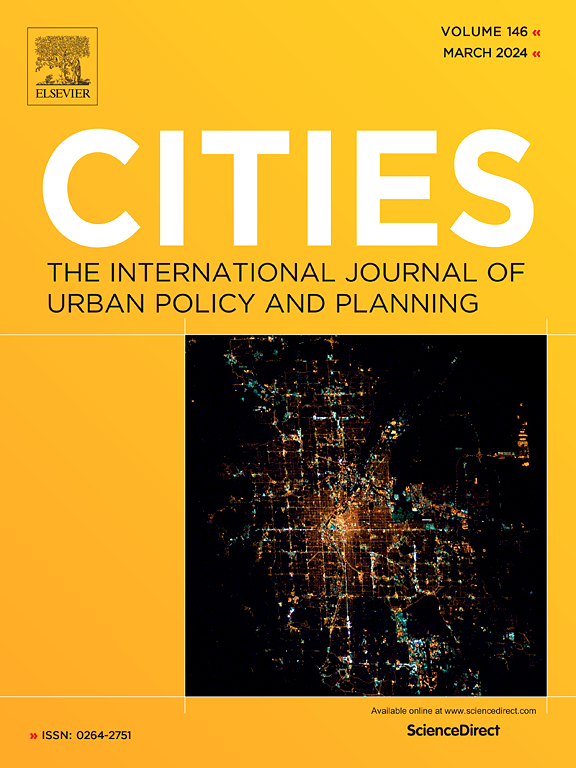Developing a measurement model to assess perceived housing inequality: Exploratory and confirmatory factor analyses
IF 6.6
1区 经济学
Q1 URBAN STUDIES
引用次数: 0
Abstract
Housing inequality and resulting housing crisis are pressing global issues with significant socioeconomic implications. This study develops a robust measurement model for assessing housing inequality from residents' perspectives, filling a critical gap in the existing literature that largely overlooks subjective perceptions. By conceptualising housing inequality as a multidimensional construct encompassing affordability, sanitation, comfort, maintenance, safety and security, space, local facilities, accessibility, and social inclusivity, our model captures nuanced disparities that conventional metrics may miss. This study addresses the lack of a standardised measurement model for perceived housing inequality, which has hindered comparative research and policy development. Using exploratory and confirmatory factor analyses (EFA and CFA), the model was validated through data from Nottingham, a city from the UK with notable socioeconomic diversity and high deprivation levels. Study findings highlight that perceived housing inequality, rooted in individual assessments of housing quality, affordability, and neighbourhood environment, is equally significant as its traditional nature, which mostly focuses on objective indicators such as income or housing availability. Theoretically, the study challenges conventional economic and spatial debates that rely solely on objective measures. It highlights the role of perception in shaping urban experiences and social cohesion, offering a holistic framework that integrates subjective dimensions of housing inequality. This study provides insights that researchers, local authorities, and policymakers can use to assess perceived housing inequality more accurately, guiding targeted interventions and promoting equitable urban development across diverse urban contexts.
开发一个测量模型来评估感知住房不平等:探索性和验证性因素分析
住房不平等和由此产生的住房危机是紧迫的全球问题,具有重大的社会经济影响。本研究开发了一个稳健的测量模型,用于从居民的角度评估住房不平等,填补了现有文献中很大程度上忽视主观感知的关键空白。通过将住房不平等概念化为包括可负担性、卫生、舒适、维护、安全和保障、空间、当地设施、可达性和社会包容性在内的多维结构,我们的模型捕捉到了传统指标可能忽略的细微差异。这项研究解决了缺乏标准化衡量模型的问题,这阻碍了比较研究和政策制定。利用探索性和验证性因素分析(EFA和CFA),通过来自英国诺丁汉的数据验证了该模型,诺丁汉是一个具有显着的社会经济多样性和高度剥夺水平的城市。研究结果强调,基于对住房质量、可负担性和社区环境的个人评估的感知住房不平等与其传统性质同样重要,传统性质主要关注收入或住房供应等客观指标。从理论上讲,这项研究挑战了传统的经济和空间辩论,这些辩论完全依赖于客观的衡量标准。它强调了感知在塑造城市体验和社会凝聚力方面的作用,提供了一个整合住房不平等主观维度的整体框架。这项研究为研究人员、地方当局和政策制定者提供了见解,可以用来更准确地评估感知到的住房不平等,指导有针对性的干预措施,促进不同城市背景下的公平城市发展。
本文章由计算机程序翻译,如有差异,请以英文原文为准。
求助全文
约1分钟内获得全文
求助全文
来源期刊

Cities
URBAN STUDIES-
CiteScore
11.20
自引率
9.00%
发文量
517
期刊介绍:
Cities offers a comprehensive range of articles on all aspects of urban policy. It provides an international and interdisciplinary platform for the exchange of ideas and information between urban planners and policy makers from national and local government, non-government organizations, academia and consultancy. The primary aims of the journal are to analyse and assess past and present urban development and management as a reflection of effective, ineffective and non-existent planning policies; and the promotion of the implementation of appropriate urban policies in both the developed and the developing world.
 求助内容:
求助内容: 应助结果提醒方式:
应助结果提醒方式:


